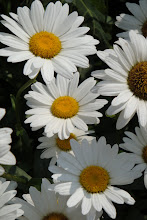
1 Whoever Shall Have Some Good Peanuts 2:17
2 The Green Grass Growing All Around 2:26
3 I Had a Little Nut Tree 1:08
4 The Crawdad Song 2:35
5 Michael Finnegan 1:01
6 Jolly Old Roger 1:45
7 Old Dan Tucker 1:40
8 Old Boastun Was Dead 1:50
9 Little Old Woman All Skin and Bone 1:17
10 A Horse Named Bill 2:10
11 The Barnyard Song 1:26
12 Groundhog 1:55
13 Three Foolish Piglets 1:08
14 Old Blue 2:36
15 Mr. Rabbit 1:35
16 All Hid? 1:22
17 Robin the Bobbin 2:11
18 Frog Went Courting 3:30
19 The Eagle's Lullaby 2:26
20 The Frog Song 3:27
Review written by Ivy Wilson
2 The Green Grass Growing All Around 2:26
3 I Had a Little Nut Tree 1:08
4 The Crawdad Song 2:35
5 Michael Finnegan 1:01
6 Jolly Old Roger 1:45
7 Old Dan Tucker 1:40
8 Old Boastun Was Dead 1:50
9 Little Old Woman All Skin and Bone 1:17
10 A Horse Named Bill 2:10
11 The Barnyard Song 1:26
12 Groundhog 1:55
13 Three Foolish Piglets 1:08
14 Old Blue 2:36
15 Mr. Rabbit 1:35
16 All Hid? 1:22
17 Robin the Bobbin 2:11
18 Frog Went Courting 3:30
19 The Eagle's Lullaby 2:26
20 The Frog Song 3:27
Review written by Ivy Wilson
"Whoever Shall Have Some Good Peanuts & Other Folk Songs for Children," is a collection from Smithsonian Folkways Recording (c) 2006. The Songs were sung by Sam Hinton, who learned many of the songs from his musical grandfather, mom and dad, and was playing harmonica by age five. The songs are mostly upbeat and playful but some contain undertones of serious life lessons, while others are just plain funny! My baby and I enjoy the collection as a whole because it is real music selected from American folk artists throughout history (not overly sweetened "baby music product") that we can all listen, bop to, and enjoy from beginning to end as a family. I know he will grow to love it at any age.
The first song on the disk is my favorite and gives the collection its title, "Whoever shall have some Good Peanuts". This is one of many cumulative songs on the album, making it funny on two levels. First of all, the singer has to sing faster and faster the more verses he adds as the song goes on; it is a challenging feat that makes us laugh as he scrambles to say all the words in time. Second, the song is about a child rejoicing in the hopes that the naughty child who refuses to share his delicious snacks today will someday have none, and the first child will return the stinginess by keeping all his snacks for himself when that day comes!- which isn't a great sharing lesson unless put into context. It is however a humorous childs point of view that makes me giggle every time I play the CD.
Song #5, Micheal Finnegan, is another cumulative song. These are common in folk music, as the nature of folk comes from sing along groups by the campfire, generation to generation, everyone adding in and sharing. As long as you keep the backbone of the song and rhyme with Finnegan, you can add as many verses as you like if you are fast enough!
Song #9 Little Old Woman is another one of my favorites because I remember a version of it being played in music class by our music teacher, Mr. Martino, for Halloween every year. The song in the only slow and spooky song in the collection, with imagery of a graveyard, dead bodies, and a skeletal old woman. There is repetitious OOOOOhhhs in each verse, like a ghost howling, until the last verse, when instead of the OOOhhh, there is a loud scream (or in Mr. Martinos case, a loud crash on the piano keys) that makes every person jump the first time they hear it.
Other songs contain lessons masked in lighthearted storytelling such as #13 Three Foolish Piglets, or #14 Old Blue. The piglets "Up and die" because, eager to grow up too fast, they refused to say "wee wee wee" and only ever let out a dignified oink oink oink, thereby ending their mothers milk supply. Old Blue goes through the life cycle of a great dog, even through death of the dog and the future death of the owner as well as their reunion in heaven which makes for a sad and sweet ending, while never letting go of the upbeat feeling throughout the song.
#16 "All Hid" was composed in 1940 by a nine year old girl named Hetty Godfrey and recorded for the library of congress. The song was sung during hide and seek by the seeker instead of counting.
Last is #20 the Frog Song, learned by Hinton from his grandfather, passed down through the family. It is fun to listen to with your little one because you are supposed to bounce the baby up and down for the "jingle-a, bouugla, bougla..." part.
Folkways Records started in 1948 by Moses Asch to support traditional artists, spoken word, and sounds from around the world. The Smithsonian Institution, the national institution of the US, took over the Smithsonian Folkways non-profit record label in 1987. Sam Hinton is a true blue American Folk singer who's voice and style portray the historic songs with honesty and liveliness. Each song is like listening to a new story and playing a fun game with Sam Hintons voice as the storyteller. The collection has a wholesome feel, without the corniness, cheesiness, or excess sweetness of so much of todays products for kids. How is this achieved? It is a secret passed on from generation to generation; you have to listen to find out!
